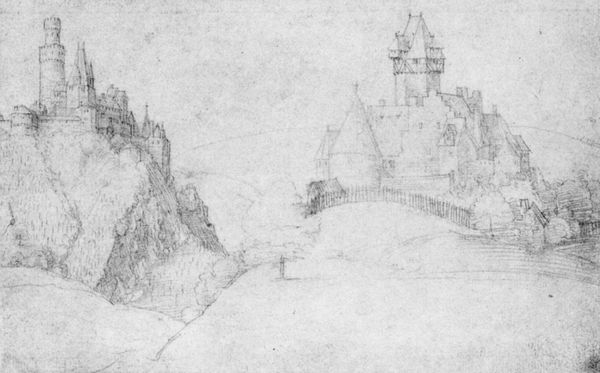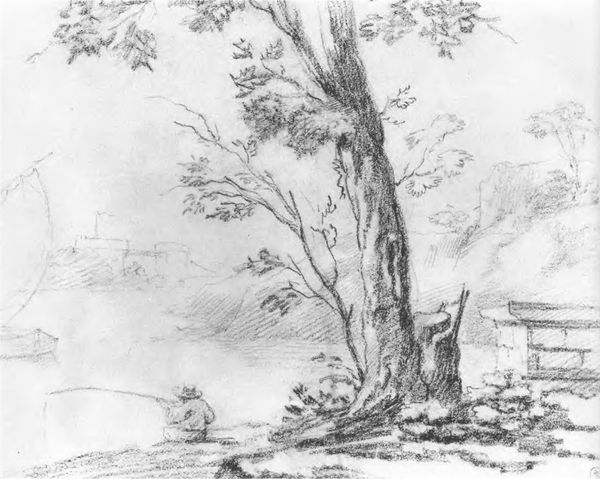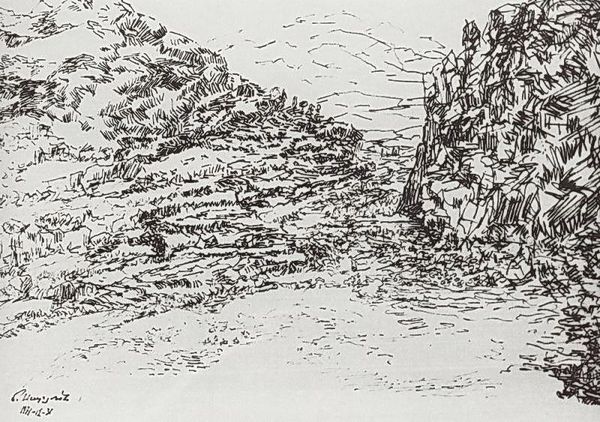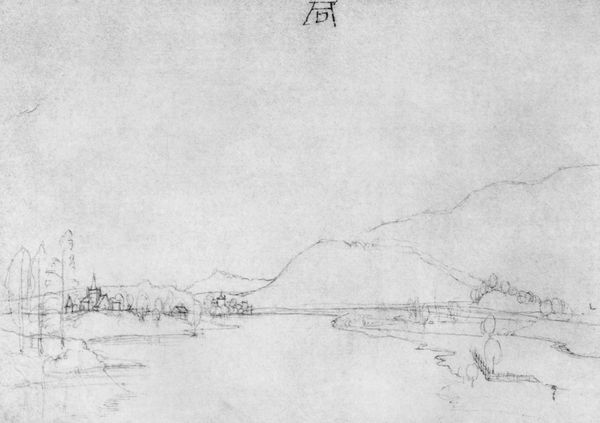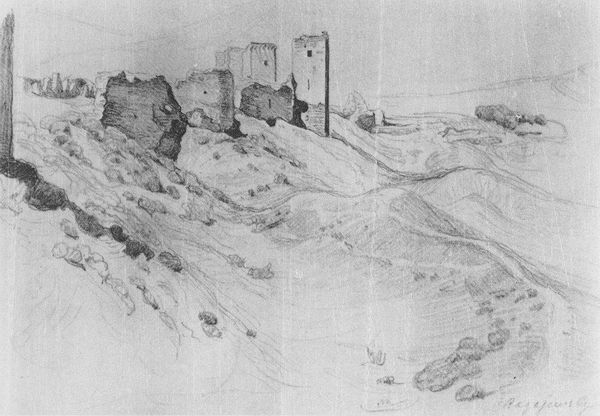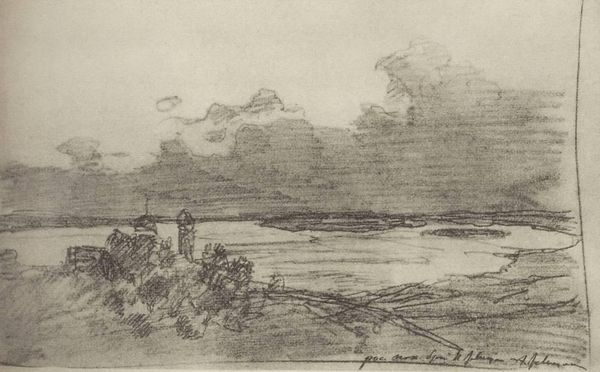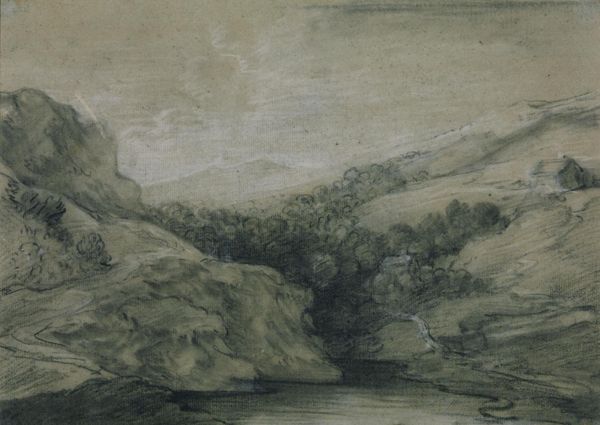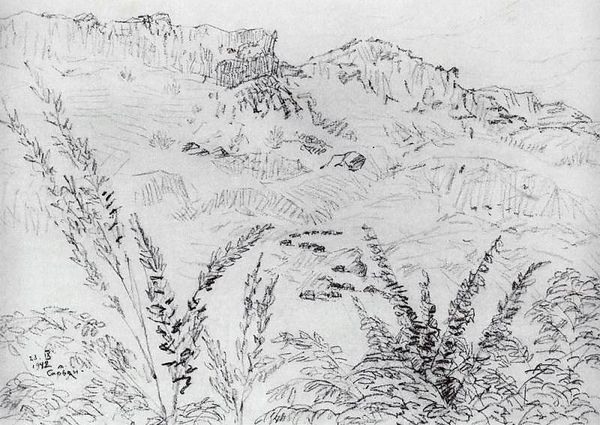
drawing, charcoal
#
drawing
#
medieval
#
landscape
#
charcoal drawing
#
form
#
line
#
charcoal
#
northern-renaissance
#
charcoal
Copyright: Public domain
Editor: This drawing, "Drawing of the castles of Alsacien Ortenberg (right) and Ramstein (left)", was made by Hans Baldung in 1514, using charcoal. I'm immediately struck by the contrast between the precise, almost architectural rendering of the castles, and the looser, more suggestive treatment of the landscape. How do you interpret this contrast? Curator: It's a powerful contrast, isn't it? The castles, symbols of power and authority, are meticulously rendered, reinforcing their dominance. Yet, this precision also hints at a rigid social structure, a fortress against the fluidity of nature and the lives within. The landscape, by contrast, almost breathes. How do you see the relationship between these fortified structures and the natural environment? Editor: It’s like the castles are trying to impose order on the wildness of nature, a literal manifestation of control. Curator: Precisely! And who benefits from this control? Baldung was working during a time of immense social upheaval, with peasant revolts challenging the established order. Do you think this drawing might subtly reflect those tensions? Consider also who would have been commissioning or purchasing such works at the time. Editor: It could be seen as a statement of the ruling class's power, even if unintended, by focusing on their symbols of dominance – the castles. Was Baldung making a statement or just portraying the landscape? Curator: The beauty of art lies in its ambiguity. It can be both. Baldung, consciously or not, situates these symbols of authority within a world teeming with potential for disruption. This interplay of power and potential resistance becomes really interesting when we consider our own moment. Does that resonance hit you? Editor: Absolutely. It highlights how structures of power continue to shape our relationship with the environment and society. This artwork invites critical reflection on whose perspectives are centered in historical and contemporary narratives. Thanks, I now have much to reflect upon concerning social struggles in the world. Curator: My pleasure, considering these undercurrents makes viewing this piece an intellectually stimulating activity.
Comments
No comments
Be the first to comment and join the conversation on the ultimate creative platform.
